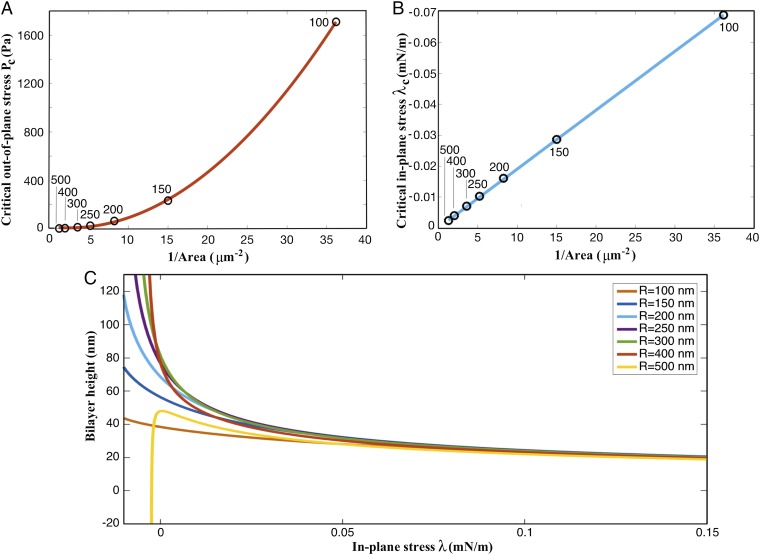Fig. 4.
Ease of buckling depends on the bilayer size. (A) Critical out-of-plane stress () needed to buckle a bilayer inward as a function of the inverse of the bilayer area (text adjacent to the data points shows the corresponding bilayer radius). The critical pressure undergoes a significant increase for nm. (B) Critical in-plane stress () needed to buckle a bilayer inward as a function of the inverse of the bilayer area (text adjacent to the data points shows the corresponding bilayer radius). The critical stress varies linearly with the inverse of the area. The slope of the curve is (κ is the bending modulus and A is the area of the simulated bilayer). (C) The deflection response of bilayers with different radii R as a function of in-plane stress when subjected to . Bilayers with deform outward, whereas bilayer with buckle inward. The plot reveals the propensity of larger bilayers to undergo instability at minimal in- and out-of-plane stresses.

